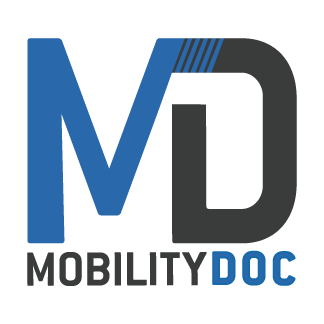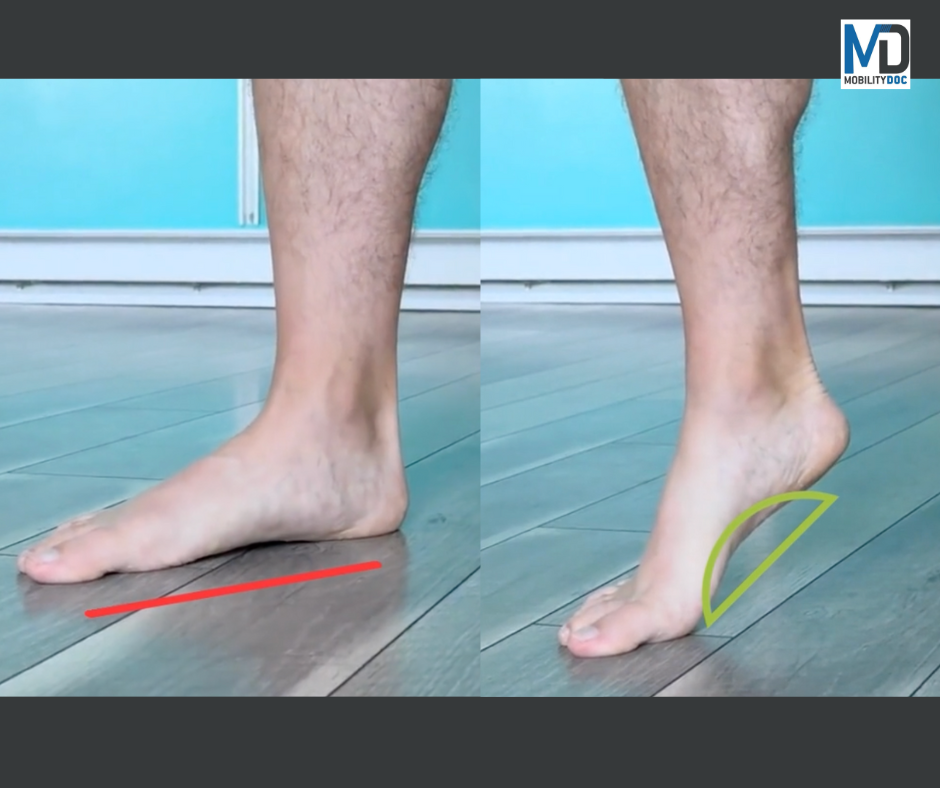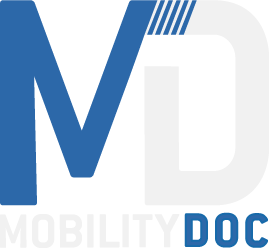Have you noticed that your arches seem a little, well… flat? Don’t worry; you’re not alone! Many people deal with flat feet, but not all flat feet are created equal. Today, we’re diving into a fascinating topic that’s crucial for anyone concerned about their foot health or dealing with foot, heel, and ankle pain. We’re exploring the differences between flexible and rigid flat feet, how you can tell which ones you have, and how to fix them.
Flexible Flat Feet vs. Rigid Flat Feet
Let’s start by understanding the difference between these two common types of flat feet.
– These are often called “fallen arches.”
– When you sit, your arches appear normal, but they flatten when you put weight on them or go onto tiptoe.
– Flattening of arches typically happens after injury, sudden weight gain, or with aging/regular wear and tear
– In this case, the arches stay flat, whether you’re standing or not.
– This type of flat foot is typically more problematic, potentially causing pain and discomfort.
– Rigid flat feet is generally more of a genetic problem where your bones and tendons aren’t in the optimal position to support your arches.
How Many Arches Do You Have?
You you’re probably thinking this is a trick question… but you may also be surprised by the answer! Each foot has 3 arches. The medial longitudinal arch (the typical one you’d think about), the lateral longitudinal arch, and the anterior transverse arch. All 3 of these arches need to work together to support proper function in your foot. Your arches aren’t just there for looks; they play a crucial role in supporting your body weight, shock absorption, and helping you move efficiently.
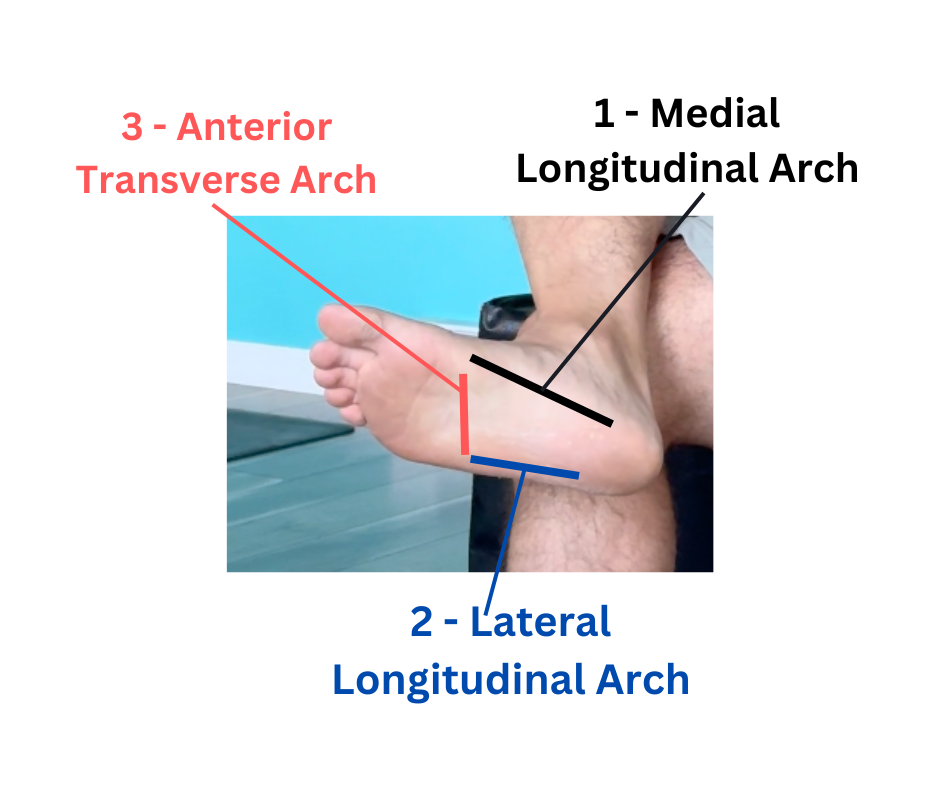
The arches in your feet are formed by a complex interplay of bones, muscles, tendons, and ligaments. Each of them are playing a part in buidling both passive and active structures. Passive structures of the foot and arch are things like bones, ligaments, and even the fascia (if you’re thinking plantar fascia… you’re correct). Basically anything that isn’t under your control to contract.
The active structures are the muscles that surround and help to support the bones and ligaments. There are 2 ways to describe these muscles. The first is intrinsic. Intrinsic muscles have both attachment points inside the foot. Extrinsic muscles have 1 attachment point inside the foot and the other originates outside the foot. For example a big part of dynamic stability of the arch comes from the posterior tibialis! This is a muscle that connects in the back of the calf and goes down into the bottom of the foot.
Make sure you watch the video for more information on the anatomy of the foot and arches!
Testing for Flexible or Rigid Flat Feet
There are 2 quick and easy ways to see which type of flat feet you have:
1 – Stand flat and take note of what your arch looks like. Now, raise up onto your tiptoes. Did the shape of your arch change? If when you go up onto your toes you can see your arches take shape, you definitely have flexible flat feet.


2 – Sit on a chair or bench with your feet on the ground (no pressure or minimal pressure in them). How do your arches look? Stand up straight onto your feet. If you had some nice looking arches before you stood up and then after adding some weight they seemingly disappeared you have flexible fallen arches.
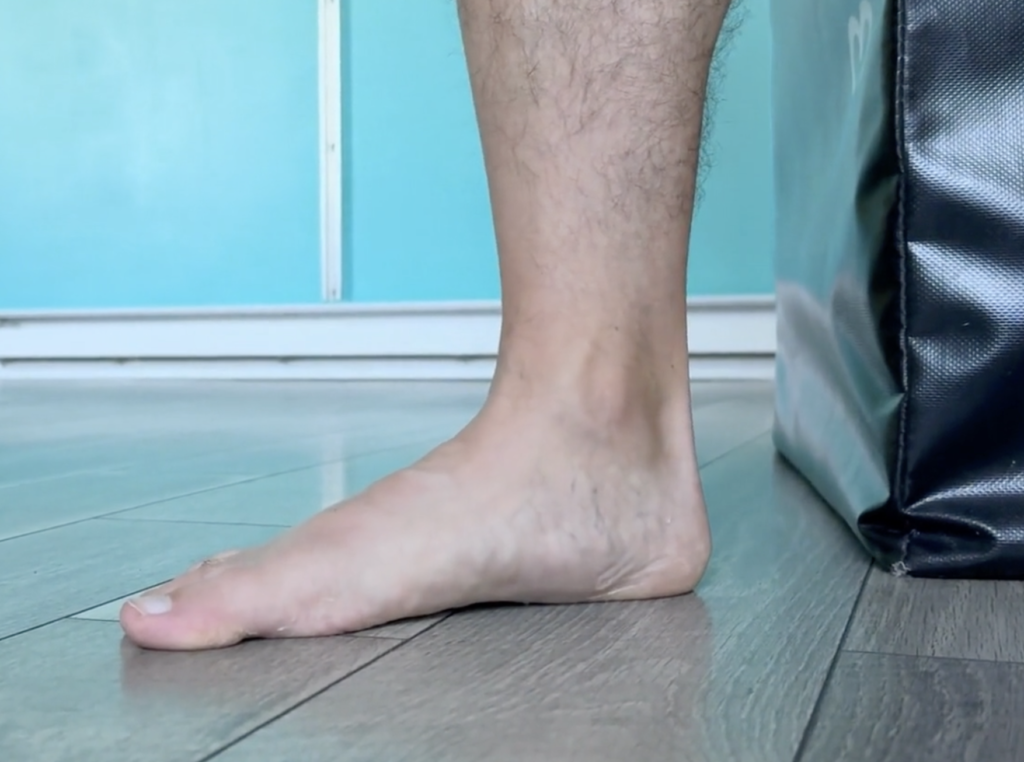
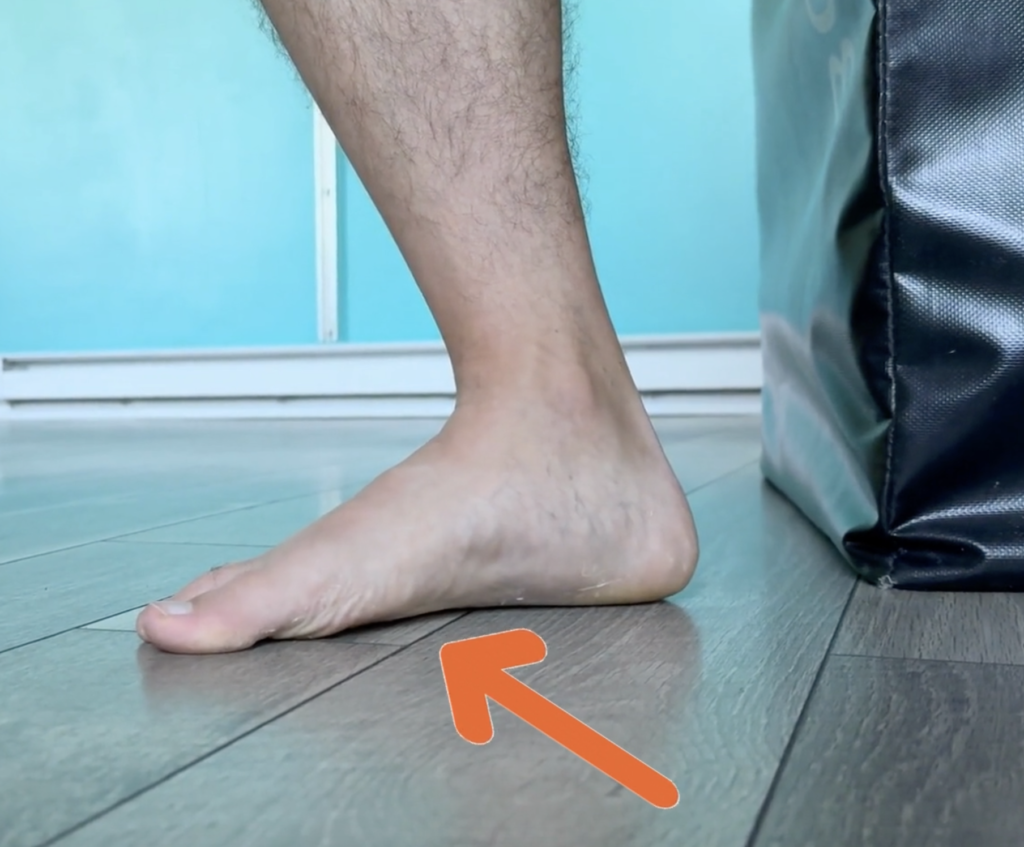
If you tried these tests and you didn’t see your arches form either when going onto tiptoe or in the seated position it’s highly likely you have rigid flat feet.
The real difference between Flexible and Rigid Flat Feet?
Think of them like the structural pillars of a bridge, keeping everything in balance. In flexible flat feet, this structure is still somewhat functional, but it loses its shape under pressure. With rigid flat feet, the architecture is more permanently altered. That doesn’t mean that there isn’t anything you can do!
Tools to the Rescue
Alright, now let’s get into how you can help fix the connective tissue in those arches. Here are a few of our favorite tools and methods:
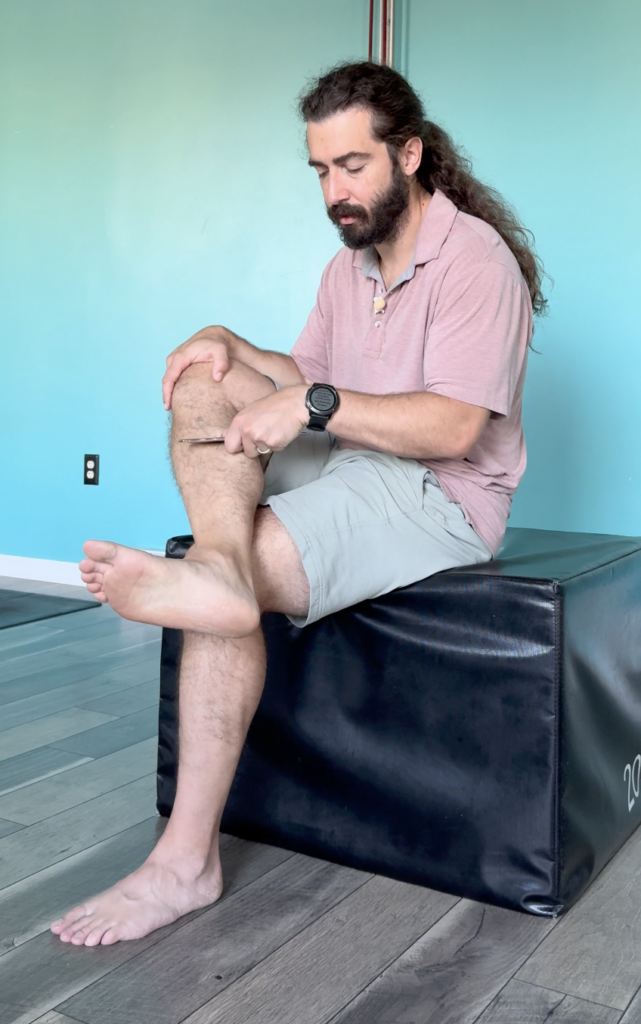
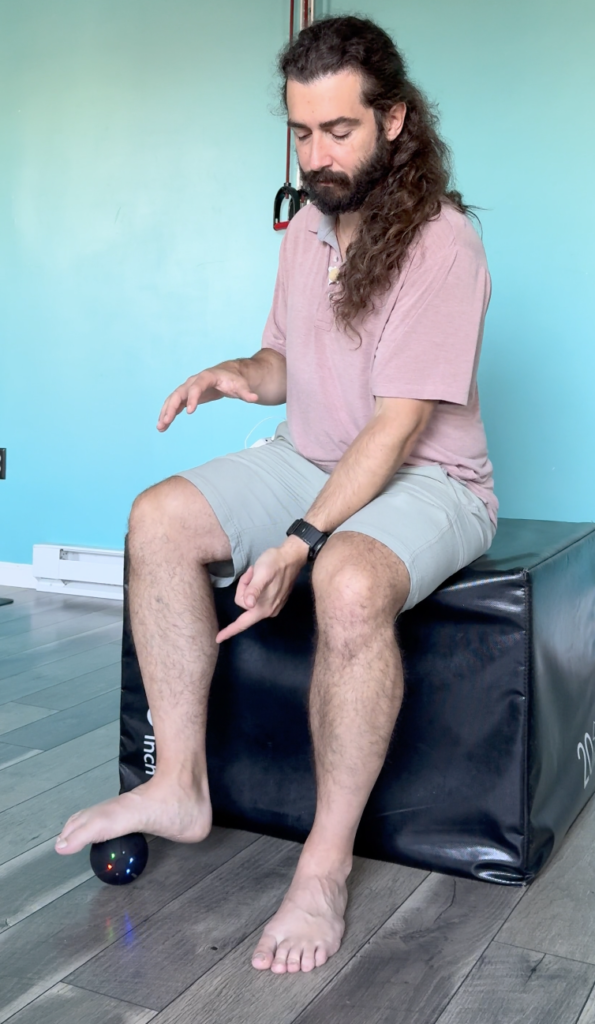
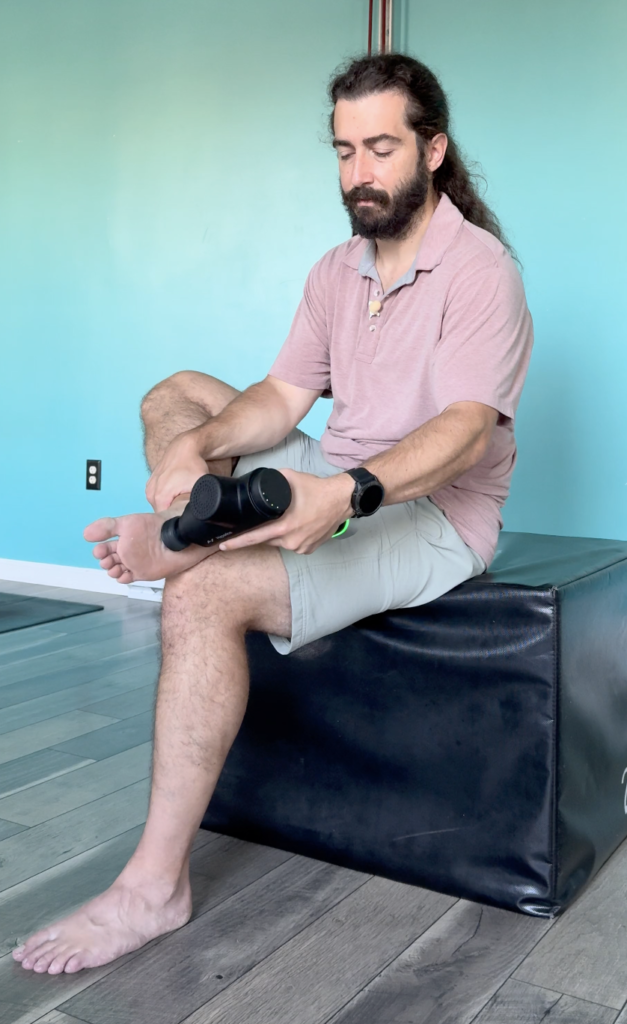
- Hypervolt Pro 2 – This percussion massager is a godsend for loosening up tight muscles and improving blood flow through your whole body. Use it to massage the arches, calf muscles, and your shin to relieve tension and discomfort.
- Sidekick Graston Tool – If you’re looking for a tool to graston, Sidekick is a great affordable alternative to the real thing. Its unique shape and design allow you to target specific areas of the foot’s connective tissue, helping to break up adhesions and promote healing. You can use the same tactics as you did with the hypervolt by also going into your calf and shin to relieve tension.
- Hypersphere Mini – Don’t underestimate the power of a compact massage ball! Roll it under your feet to release tension, stimulate blood flow, and improve mobility in your arches. The vibration aspect of this ball is level up to a regular tennis or lacrosse ball. It sends a signal to your brain to help those muscles in your foot relax. Pro Tip!! Make sure as soon as that ball is on to apply pressure with your foot. It will be bouncing everywhere otherwise!
Use any of the above methods for about 10 minutes a day and you will see real change in the way your arches are feeling.
If you’re local, we sell all of these amazing tools in store!! Make sure you ask about what other benefits they can do for you during your next appointment!
Check out this detailed video on how to use the above tools and dive even deeper into the anatomy of the foot!
Next week we are going to continue talking about how to fix flat feet. Check in for one of our Mobility-Doc primers to strengthen and raise your arches!
Are Flexible Dropped Arches Causing Your Heel Pain?
That’s right… heel, general foot, and even ankle pain is caused by dropped arches. This kind of issue is very common but does put extra strain on your plantar fascia leading to pain in the bottom of your foot! MDRx Arch Restoration will help you restore your arches and strengthen the intrinsic and extrinsic muscles. Stop dealing with achy sore feet. Start your arch restoration today!
